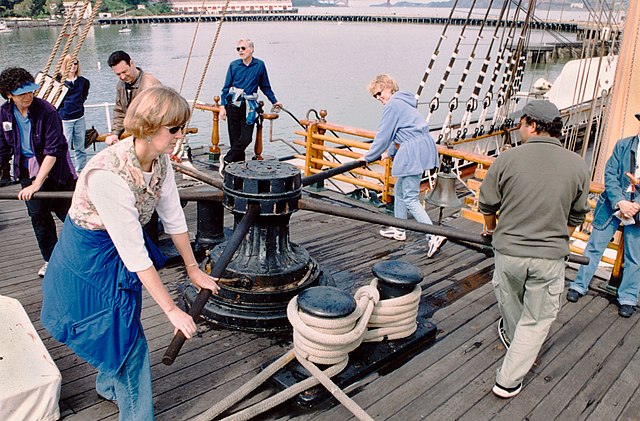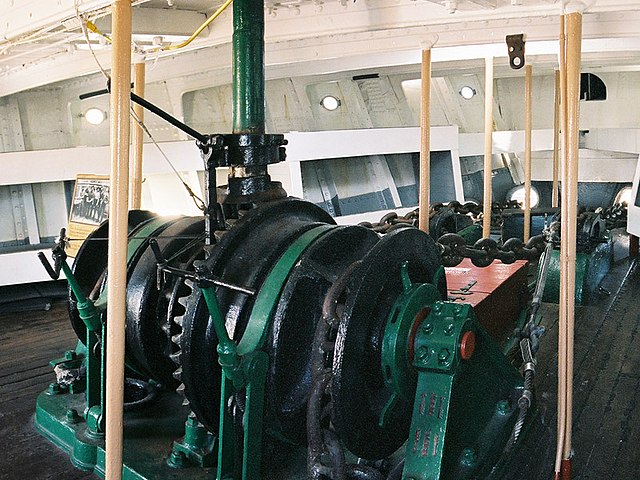A capstan is a vertical-axled rotating machine developed for use on sailing ships to multiply the pulling force of seamen when hauling ropes, cables, and hawsers. The principle is similar to that of the windlass, which has a horizontal axle.
Tourists turn a capstan. The tensioned portion of the rope would fasten the ship to the quay, hoist a foresail, lift a spar into position on the mast or to transfer cargo to or from a dock or lighter.
Capstan
Anchor windlass
Diagram of Ruston Proctor Steam Capstan 1883
The windlass is an apparatus for moving heavy weights. Typically, a windlass consists of a horizontal cylinder (barrel), which is rotated by the turn of a crank or belt. A winch is affixed to one or both ends, and a cable or rope is wound around the winch, pulling a weight attached to the opposite end. The Greek scientist Archimedes was the inventor of the windlass. The oldest depiction of a windlass for raising water can be found in the Book of Agriculture published in 1313 by the Chinese official Wang Zhen of the Yuan Dynasty.
Turnbridge windlass lifting road bridge over Huddersfield Broad Canal
2 Spanish Windlasses on a bunch of sticks, in the starting position and tightened.






